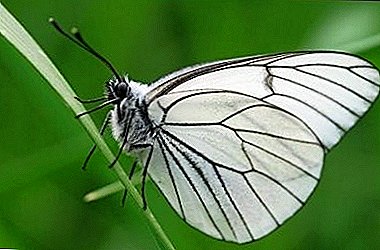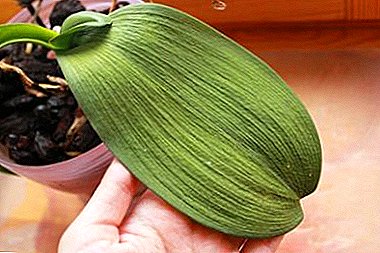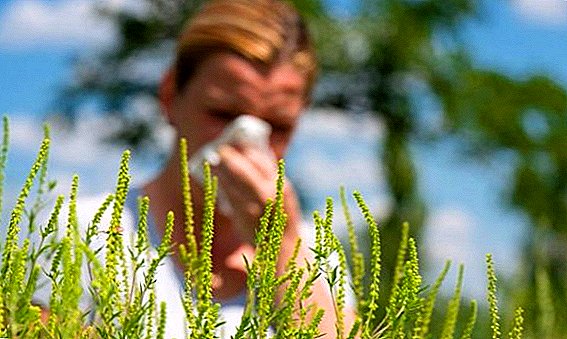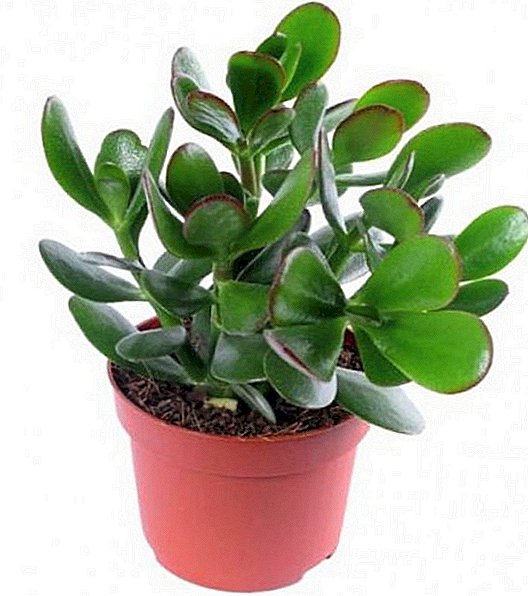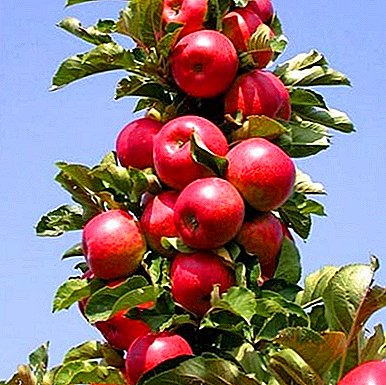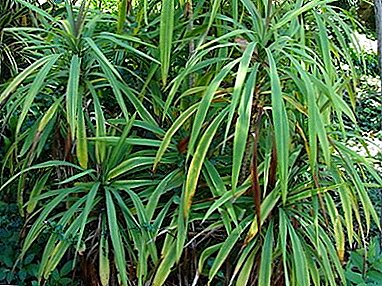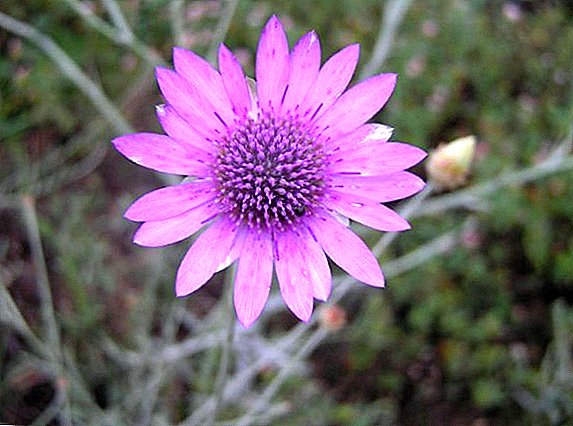 Xerantemum is a beautiful unpretentious annual flower, which has long been used as an ornamental plant in landscape design and for the decoration of flower beds. Learn about the botanical description of the flower and the process of growing at home.
Xerantemum is a beautiful unpretentious annual flower, which has long been used as an ornamental plant in landscape design and for the decoration of flower beds. Learn about the botanical description of the flower and the process of growing at home.
Botanical description
Xerantemum is a one-year plant that is part of the Compositae family. It was grown at home at the end of the 18th century in southern Europe, but soon it spread throughout the world, thanks to its unpretentiousness to the growing conditions and unusual beauty that persists even after drying. The flower is characterized by the presence of an erect stem that can reach a height of 60 cm. On the stem, narrow, long lanceolate leaves are alternately planted. They reach about 3 cm in length and 0.5 cm in width. The stalk is covered with white fibers.  Inflorescences have the form of baskets, represented by hemispheres. Ornamental species of this plant with terry or semi-double flowers can be white, purple or pink flowers. The flowers are small, not more than 3 cm in diameter. It blooms from early July to September. Flowering friendly and abundant. Ripening of seeds on a flower occurs at the end of summer. The seeds are rather small, grayish, in one gram more than 700 pieces are concentrated, they remain viable for up to 3 years. The genus xerantemum has 6 species, but in floriculture use only xertetemum annual.
Inflorescences have the form of baskets, represented by hemispheres. Ornamental species of this plant with terry or semi-double flowers can be white, purple or pink flowers. The flowers are small, not more than 3 cm in diameter. It blooms from early July to September. Flowering friendly and abundant. Ripening of seeds on a flower occurs at the end of summer. The seeds are rather small, grayish, in one gram more than 700 pieces are concentrated, they remain viable for up to 3 years. The genus xerantemum has 6 species, but in floriculture use only xertetemum annual.
Distribution and habitat
The habitat of the xerandtemum is the southern and western parts of Europe, the Mediterranean, the Balkans and Asia Minor. The plants grow best in the steppe, on chalk outcrops, prefer dry slopes and low mountains, they can also be found on sandy soils.
Familiarize yourself with such dried flowers as amaranth, celosia, helihrizum, craspedia and tansy.
Use in landscape design
Xeranthemum is quite a popular plant and is often used in landscape design. They are decorated with flowerbeds, rockeries, also used in the creation of living borders. Thanks to bright terry inflorescences, the xeranthem allows to decorate any territory. The plant can be planted both separately and in combination with other flowers, creating beautiful compositions.  Xerantemum is combined with astrantia, salvia, yarrow. The plant is often chosen as a flowerbed decoration, as the flower is easy to maintain and does not require special conditions for growing. In addition, after the end of flowering, he continues to please the eye.
Xerantemum is combined with astrantia, salvia, yarrow. The plant is often chosen as a flowerbed decoration, as the flower is easy to maintain and does not require special conditions for growing. In addition, after the end of flowering, he continues to please the eye.
Use in floristics
Often, the xerantemum is grown for cutting to create compositions, bouquets in both fresh and dried form. Thanks to its excellent state of conservation, the flower dries out after cutting, without losing the color of the buds and keeping the shape of the flower. In order for the xeranthemum to be preserved as well as possible, it is cut at a time when the buds are not fully opened.
Also in floristics often they use haretail, teasel, cumin sandy, gypsophila, heelipterum, pinnate asparagus, cochia, lady's slipper and green roses.
After the plants are cut, they are collected in bunches and recommended to hang buds down. To dry the xerranem should be in dark, dry rooms - only in this case will be able to save the plant. Kserantemum in dry form is capable of a long time, at least 2 years to maintain a bright color and shape of buds.
Did you know? It is possible to make dry flowers more vivid, for this they use a solution of hydrochloric acid. For its preparation take hydrochloric acid (1 part) and water (12 parts), mix everything thoroughly and dip freshly cut buds into this liquid for 4-5 seconds. Next, gently shaken and dried in limbo.
 Often kseranttemum combined in bouquets with other dried flowers, annuals and perennials. To the annual dried flowers, which can be added to the bouquet with xeranthemum, include helihrizum, heelipterum, kermek. Among the perennials that are combined with this plant, anafalis, gypsophilus, yarrow, pearl oyster, lavender and astilbe are distinguished. Spikelets of wheat can be added to the bouquets, decorative garden cereals - breeze and lagurus, the bouquet will complement well the lunaria and physalis.
Often kseranttemum combined in bouquets with other dried flowers, annuals and perennials. To the annual dried flowers, which can be added to the bouquet with xeranthemum, include helihrizum, heelipterum, kermek. Among the perennials that are combined with this plant, anafalis, gypsophilus, yarrow, pearl oyster, lavender and astilbe are distinguished. Spikelets of wheat can be added to the bouquets, decorative garden cereals - breeze and lagurus, the bouquet will complement well the lunaria and physalis.Growing and caring for plants
Xerantemum is an unpretentious flower, so it can be grown at home without any problems. Consider in more detail where to plant and how to care for an ornamental plant.
Read also about such unusual flowers as sundew, passionflower, nepentes, orchis, hoya, camellia and amorphofallus.
Conditions of detention
Growing kseranttemm on the street, it is necessary to provide it with a sufficient amount of sunlight, so the plant should be planted on the sunny side of the site, or in an area with light penumbra. In the case of growing seedlings indoors, place the container on the south window. Capacity picked shallow, up to 10 cm in height, you can sow the seeds in pots, at least 9 cm in diameter. 
Soil and fertilizer
When growing seedlings of a xseranemum indoors, the container must be filled with light, loose, moist soil; it is better to purchase it in a specialized store. For the purchase of suitable universal substrate for flowering plants. Xerantemum in open field prefers to grow on light nutrient soils. Well suited for the cultivation of this plant sandy and sandy soils with neutral acidity.
Find out what phosphate and potash fertilizers are good for plants.
In order to stimulate the formation of buds, it is recommended to feed the plant with special complex fertilizers with a high content of phosphorus and potassium. Such fertilizer is purchased in specialized stores, used according to the instructions, which is indicated on the tank with fertilizing.
Watering and moisture
Xerantemum is a drought-resistant plant, so air humidity and watering are not particularly important. Watering the plant is recommended only in the process of growing seedlings and after its planting in open ground, until such time as it finally takes root. At this time, the flower is watered regularly, after the topsoil dries. Completely stop watering after the plant has increased the green mass. 
Important! The flower can be watered during the flowering period only in the case of a long drought in extreme heat.
Relation to temperature
In order for the seeds to germinate simultaneously, the temperature must be at the level of +20 degrees. It is worth remembering that the seeds may die during light frosts. The plant is cold-resistant, so it can withstand temperature fluctuations up to +5 degrees. Since the flower is an annual, it is sown for 1 season, that is, wintering is excluded. If the seeds were not collected on time and hit the soil, then next year self-seeding may occur, if they do not die in the winter. Germination of seeds that fell into the soil in the fall can only be achieved if the xeronetemum is grown in the southern regions with warm winters. 
Breeding
It is possible to propagate a flower with seeds. To grow a xeranthem is most effective in a rassadny way, therefore initially seeds are sown in a container, which is placed in a well-lit place. Sowing occurs at the end of March, and planting seedlings in open ground is produced in the first month of summer. Sowing of seeds in open ground is also practiced: in this case, it is necessary to sow in mid-late May, when a strong drop in temperature at night is excluded. If the seeds are sown in open ground, then the area is covered with a film before the appearance of the first shoots. For sowing in the soil they make small grooves (up to 3 cm in depth), sprinkling soil on top.
Important! It should be understood that when growing seedlings in the open field, to achieve flowering of the xertemum is possible only in the last month of summer.When growing seedlings in an apartment, the capacity is chosen not deep, it is filled with purchased substrate up to 8 cm in height, and the seeds are sown to a depth of no more than 0.5 cm. Over capacity cover with a film or a glass jar. Sprouting seedlings require thinning both when grown indoors and outdoors. In the case of growing seedlings in large containers, young saplings dive 3 pieces each, transplanting them into a separate pot with a diameter of at least 9 cm along with an earthy clod. When grown on the street, seedlings do not dive, then the area is covered with a dense carpet of xertemism.

Possible difficulties in growing
In the process of growing a xerranem can encounter the following difficulties:
- poor germination of seedlings with non-compliance with the temperature;
- slow germination and growth of green mass with non-compliance with regular watering;
- the inconspicuousness of an adult plant with strongly elongated pale-colored leaves, small flowers, or their absence;
- the rapid end of flowering in the absence of dressings.
Pests, diseases and prevention
The plant is fairly resistant to various diseases and pests, but can sometimes suffer from heavy rain or watering, which provoke rotting of the stem and roots. To prevent this from happening, it is necessary to avoid over-wetting the soil, since the xeranthem does not like excess moisture and prefers to do without watering even on hot summer days. It is no longer possible to cure the plant if rotting has occurred, therefore it is better not to allow it.
To pests that can appear on xertemum, include:
- Gall nematode - microscopic worm, which settles on the root, provokes problems in development and brings fast death of the flower. On the roots of a plant affected by a nematode, yellow growths appear, which soon become brown. The plant slows growth, leaves curl, the root system ceases to function. The nematode appears in well-moistened soil when the air temperature is within + 18 ... +25 degrees. The pest can be defeated using chemical agents such as Mercapthos or Phosphamide. They should be used according to the instructions on the package. To avoid the appearance of nematodes on the roots, it is necessary to monitor the soil moisture, eliminate excessive watering, do not use dubious organic fertilizers in the care of flowers.

- Leaf aphids - small midges of green or black color, which feed on plant tissue, especially eat leaf and flower buds. Aphids cause great harm to plants, as they can quickly multiply, forming huge colonies that densely settle on the green part. Under the influence of aphids, the leaves of the flower are deformed, flower stalks die, and young plants do not stand up and soon wither. The best means in the fight against aphids are: "Aktara", "Tanrek", "Confidor", which are used according to the instructions on the package. In order to prevent around the plant should regularly remove weed vegetation, inspect plants to identify the first signs of the appearance of aphids on flowers, as well as to destroy anthills.
 Leaf aphid.
Leaf aphid.
Did you know? Aphids can produce a sweetish liquid that attracts ants very much. Therefore, sometimes aphids are specially placed on plants near the anthill.
 Xerantemum can decorate your flower bed and even complement the composition in bouquets and some decorative elements. Due to simplicity and ease in the care of a plant, to grow a decorative flower at home is not difficult, and the result will surely please you.
Xerantemum can decorate your flower bed and even complement the composition in bouquets and some decorative elements. Due to simplicity and ease in the care of a plant, to grow a decorative flower at home is not difficult, and the result will surely please you.


 Leaf aphid.
Leaf aphid.